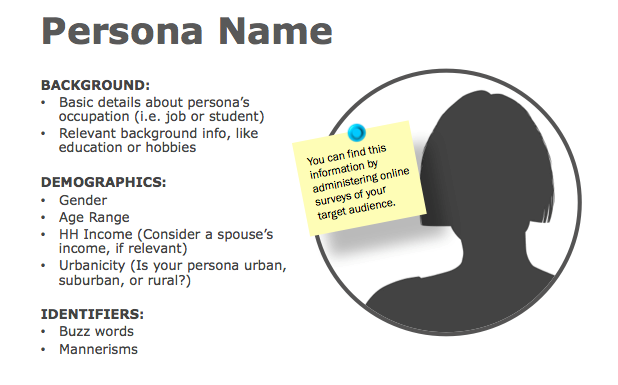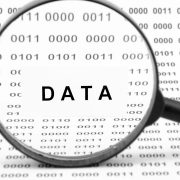Guide to Nonprofit Marketing
By Marley Niesz
In 2018, Americans donated $410 billion dollars to charities across the country, with the average household donating $5,508. Although $410 billion is a lot of money, the number of households making donations is on a decline and the donor pool is shrinking. This reveals the importance of maximizing the amount of money each individual is donating, as well as consistently re-engaging the organization donor base. In fact, it is more cost effective to retain donors than it is to acquire new ones.
In order to effectively recruit and re-engage donors, a nonprofit organization or foundation should visualize a donor persona. According to CCG’s Nonprofit Marketer’s Guide, a donor persona is a “way to describe and visualize the people you are trying to engage with, whether in a marketing effort or in a fundraising campaign.” Nonprofits create donor personas by collecting real data from their current and potential donors. This data includes demographics, behavior patterns, interests, concerns, communications preferences, and personal histories with your organization. One organization may have multiple donor personas, depending on their target market.

Figure 1 Donor Persona Template
Once an organization establishes its donor personas, it should focus on evaluating its current pool of donors and dividing them based on characteristics and engagement. This is called segmentation. One donor segment is a lapsed donor, including donors who gave previously but not in the current year. The two types of lapsed donors include LYBUNT (donors who donated “last year but unfortunately not this” year), and SYBUNT (donors who donated “some year but unfortunately not this” year.) On the other hand, there are recaptured donors who donated this year and in previous years, but not last year. There are also downgraded donors who give less and upgraded donors who give more than they did the previous year. A highly valuable donor is a recurring donor who pledges to give monthly on an automatic basis. Finally, there are single gift donors who make a one-time donation to your organization.
After evaluating current and future donor bases, nonprofit organizations can plan their charitable giving campaigns accordingly. Direct mail campaigns are physical messages printed and mailed to current and prospective donors. Because of new digital print technology, nonprofit marketers can use collected data to send personalized messages and images to individual donors. CCG frequently uses their Ricoh inkjet for nonprofit and foundational direct mail marketing, designed to print high volumes of variable printed pieces in a single pass. There are also many ways to fundraise digitally, including crowdfunding, #GivingTuesday, text-to-give, and peer-to-peer fundraising. Crowdfunding involves soliciting many small donations from a large group of people, generally online. Text-to-give and peer-to-peer fundraising are two types of crowdfunding. Text-to-give is a campaign that engages donors through mobile giving, and peer-to-peer is a campaign where individuals create personal fundraising pages and receive donations from friends and family on behalf of an organization. Finally, a newer and proven-to-be quite successful fundraising celebration is the launch of #GivingTuesday, a nationally recognized day of online giving which occurs on the Tuesday following Thanksgiving. #GivingTuesday is important to leverage as it kicks off the charitable season when many donors are looking to give.
All marketing is persuasion, and one of the best ways to engage with your donor is by using the “rhetorical triangle.” The three parts of the rhetorical triangle are ethos, logos, and pathos. Ethos establishes credibility and trust, logos creates consistency and logic within an argument, and pathos uses emotions and the imagination to sway the audience. Although it may not be obvious, these three elements are used in virtually all nonprofit marketing, especially in direct mail. Let’s look at some examples—first starting with the envelope. A direct mail campaign for a humane society or animal shelter immediately establishes pathos by printing a picture of one of their animals on the envelope. This evokes emotion from the receiver who has now connected through the image of the animal to the humane society’s message. Often, these pictures include a CTA that also tugs on the heart strings, such as “These animals are suffering. Here’s how you can help.” By evoking emotion through pathos, the nonprofit draws a sense of urgency to their message and as a result acquires more donors. Now, for the direct mail letter. After hooking a donor with pathos, this is where nonprofits can establish credibility and use logic to support their argument and further solidify a donation. An organization can establish ethos by using credible sources to back up their message and make it more believable. For example, if a nonprofit is using statistics, they should be correct and from a reliable, fact-checked source. The author or organization sending the message should establish ethos by citing their experiences with a particular cause and explaining why it is important to them. Finally, logos is an argument’s appeal to reason. A donor cannot say no to an argument when presented with real, understandable facts about an organization’s cause and its need for donations. Just like with ethos, including statistics, data, and common sense strengthens the logos behind a message and helps with convincing a donor to support your cause. For example, an organization looking to end childhood hunger should include facts that demonstrate the existence of childhood hunger and how a donation can help end it. The rhetorical pyramid is a fool proof way to craft an argument, so why not use it to argue a nonprofit cause?
For more interesting examples, powerful insight, and 10 compelling tips for successful nonprofit marketing, check out our guide titled: “Nonprofit Marketers Guide to Donor Re-engagement”. Order your copy today at: https://ccgcreates.com/guides/
10 Tips:
Tip 1 Have an ongoing strategy to re-engage donors in a timely manner.
Tip 2 Ask more of recurring donors.
Tip 3 Focus on fundraiser retention.
Tip 4 Mobile-first design pays off.
Tip 5 Social is essential.
Tip 6 Social success depends on content and timing.
Tip 7 Donors stay where you find them.
Tip 8 #GivingTuesday is great.
Tip 9 Email and direct mail are powerhouses for nonprofits.
Tip 10 Direct mail and digital marketing work together.










